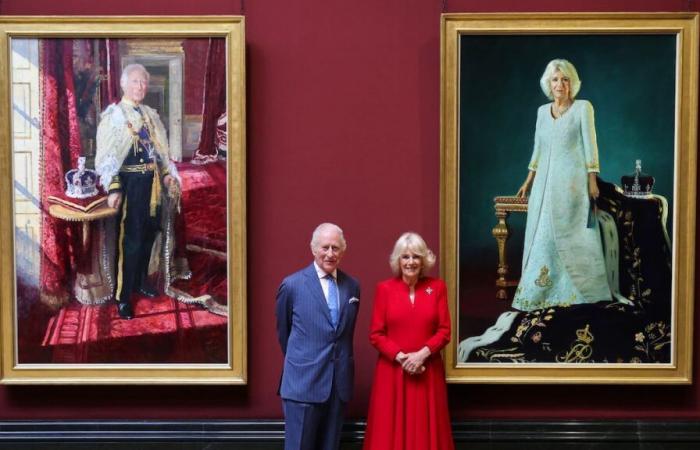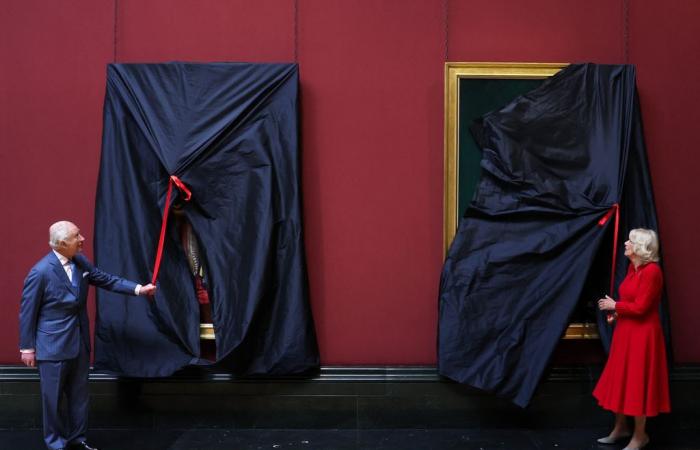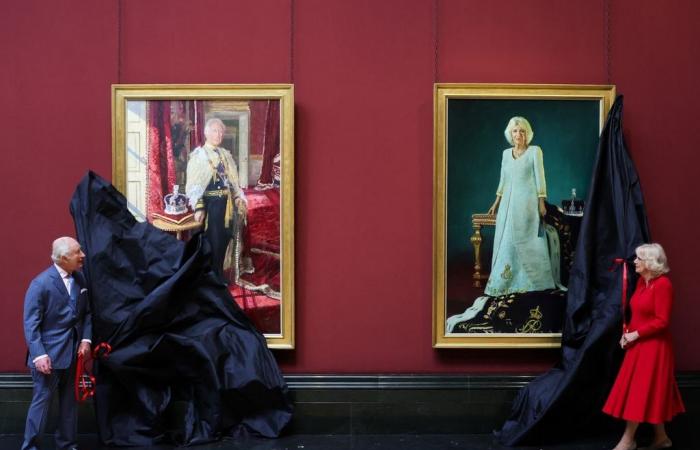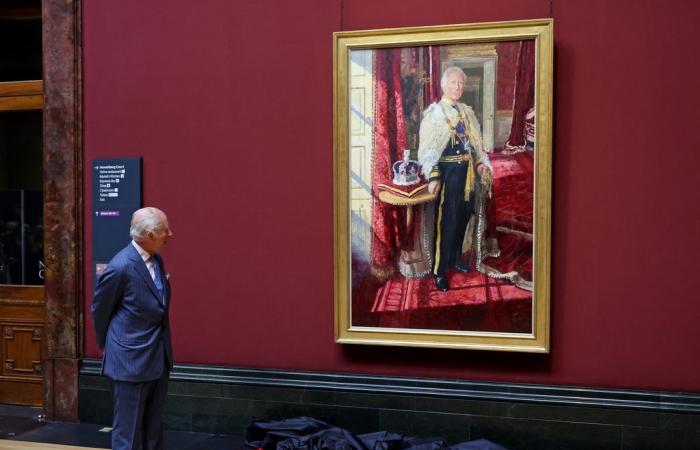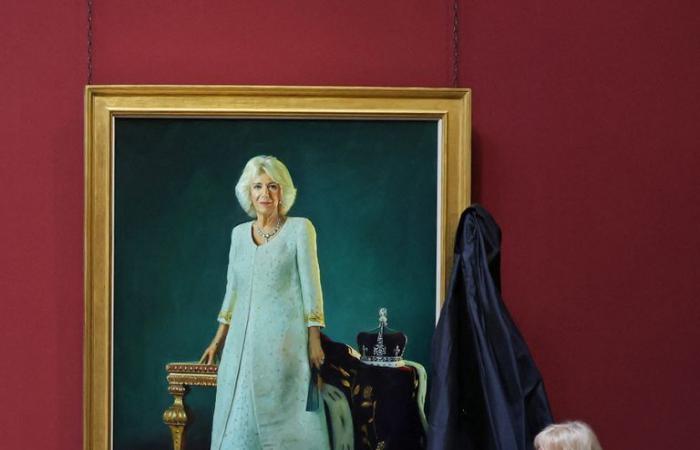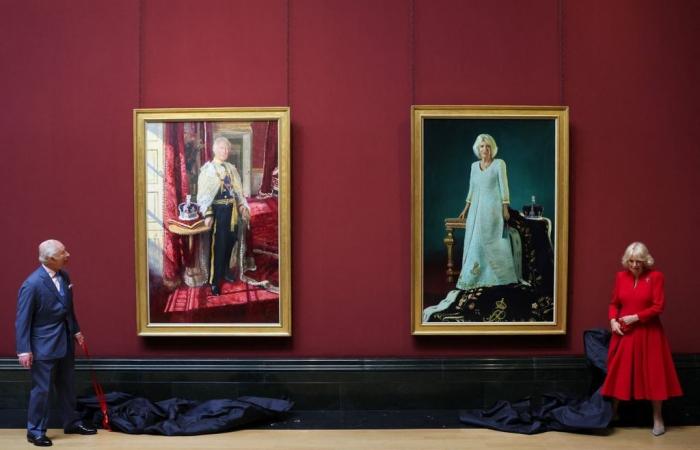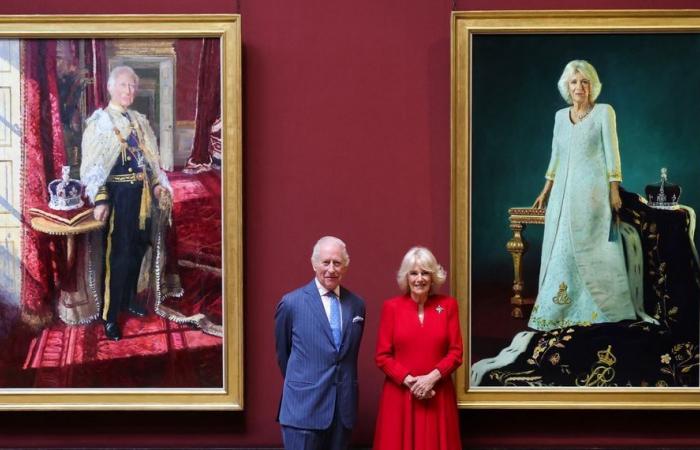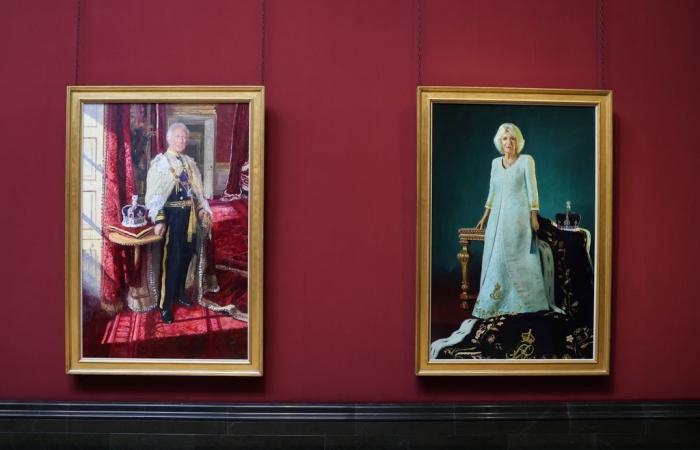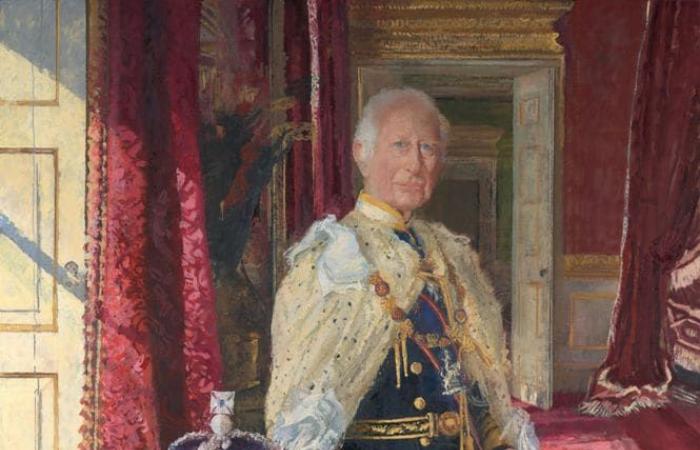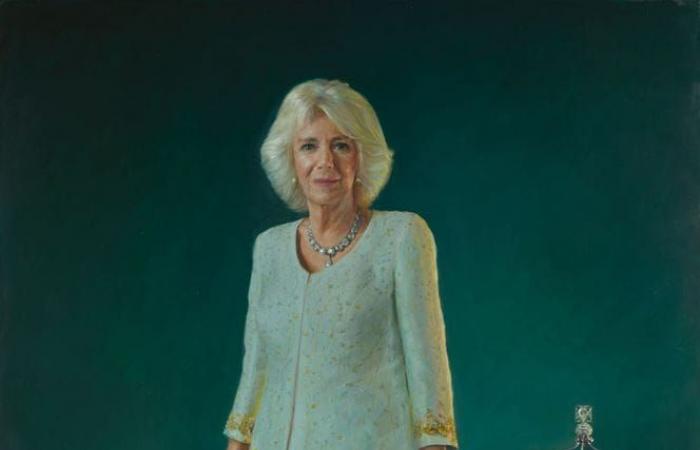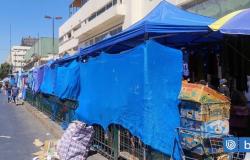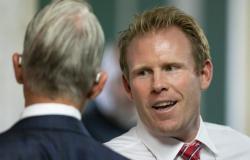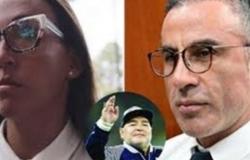The Kings Carlos and Camilla have celebrated on Tuesday the second anniversary of their coronation in the national Gallery. Together they have discovered the new state portraits that already preside over the central hall of this museum. Dresses with a trial mantle and with the clothes they used when they were anointed in the Abbey of Westminster, the works stand out for having some Spanish details’. Until now, much of the photographs of the kings of that day appeared carrying the crowns on their heads and, this time, they pose with the crowns on cushions, just as it happened when King Felipe VI was proclaimed before the courts.
Those in charge of immortalizing the British kings were personally chosen by Carlos III and Camilla. The king chose Peter Kuhfeld and Queen Camilla to Paul S. Benney. The two are painters who have worked for the English monarchy on other occasions. This tradition of coronation status portraits dates back several centuries and after the exhibition in the National Gallery will be hung in its final location: the throne hall of the Buckingham Palace.
 © POOL/AFP via Getty Images
© POOL/AFP via Getty ImagesCarlos III’s painting, made by Peter Kuhfeld, who has portrayed princes Guillermo and Harry of children, and has accompanied the monarch in many international tours, was held in five sessions in the state apartments of the St. Palace of St. James, using the throne hall. Other sessions took place in Windsor Castle. The King poses with a mantle, but with the imperial crown of the state on one side and wears the ceremonial uniform number 1 of the navy with medals and decorations.
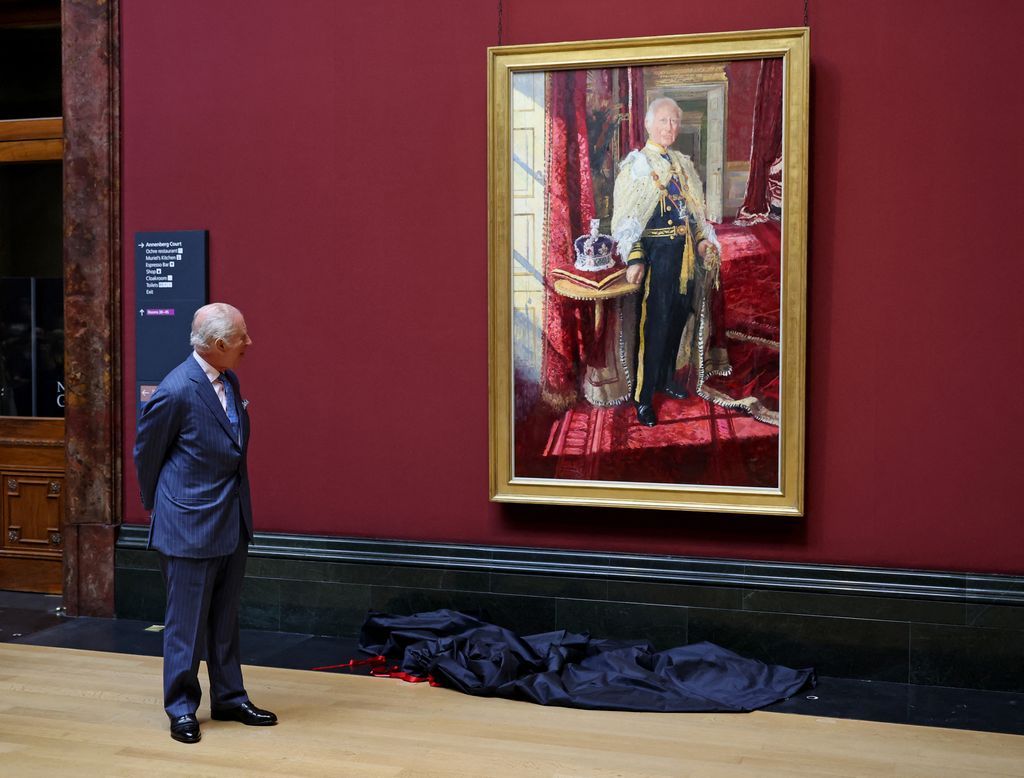 © Getty Images
© Getty Images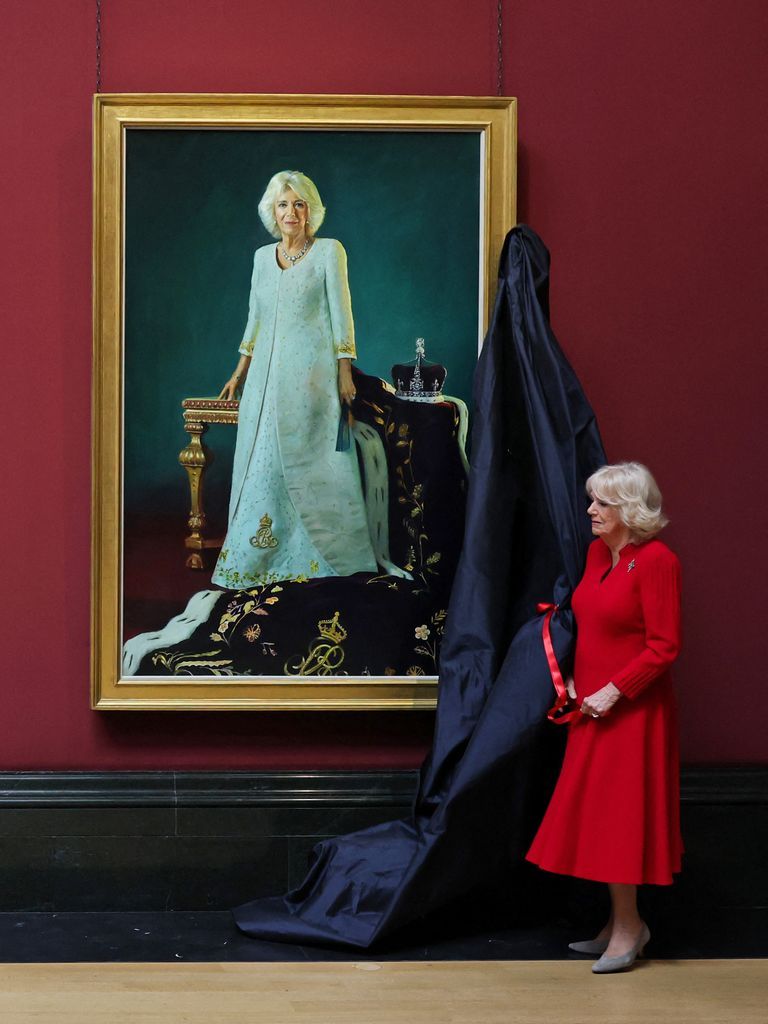 © Getty Images
© Getty ImagesFor its part, the portrait of Camilla is made by Paul Benny with the crown of Queen Maria deck that he chose for her coronation. In the image he also rests on a table and in it he wears the white dress that Bruce Oldfield made for her and is loaded with symbolic embroidery in silver and gold. The sessions to do this work were carried out at the Garden Room in Clarence House.
-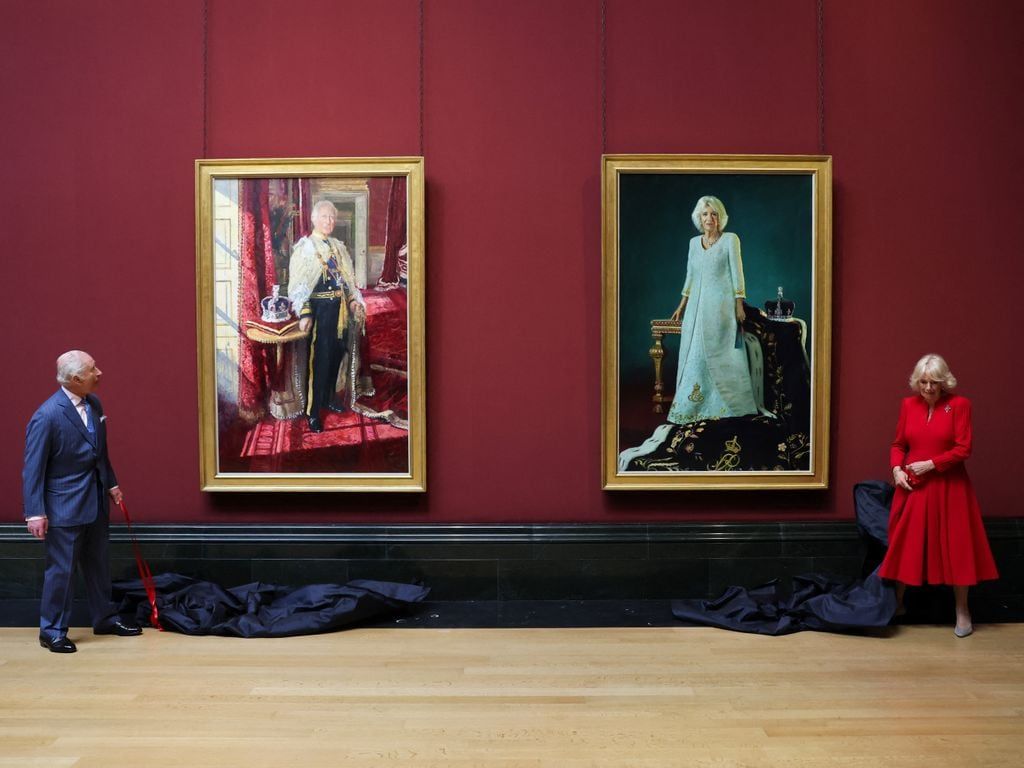 © Getty Images
© Getty ImagesThe oldest portraits that have been made of the decorations of the British monarchs date back to 1620 with the paintings of Jacobo VI and Jacobo I, which hang in Windsor Castle. Also in this fortress is the portrait of a young Queen Elizabeth II, painted by Sir Herbert James Gunn, to commemorate her climb to the throne in 1953.
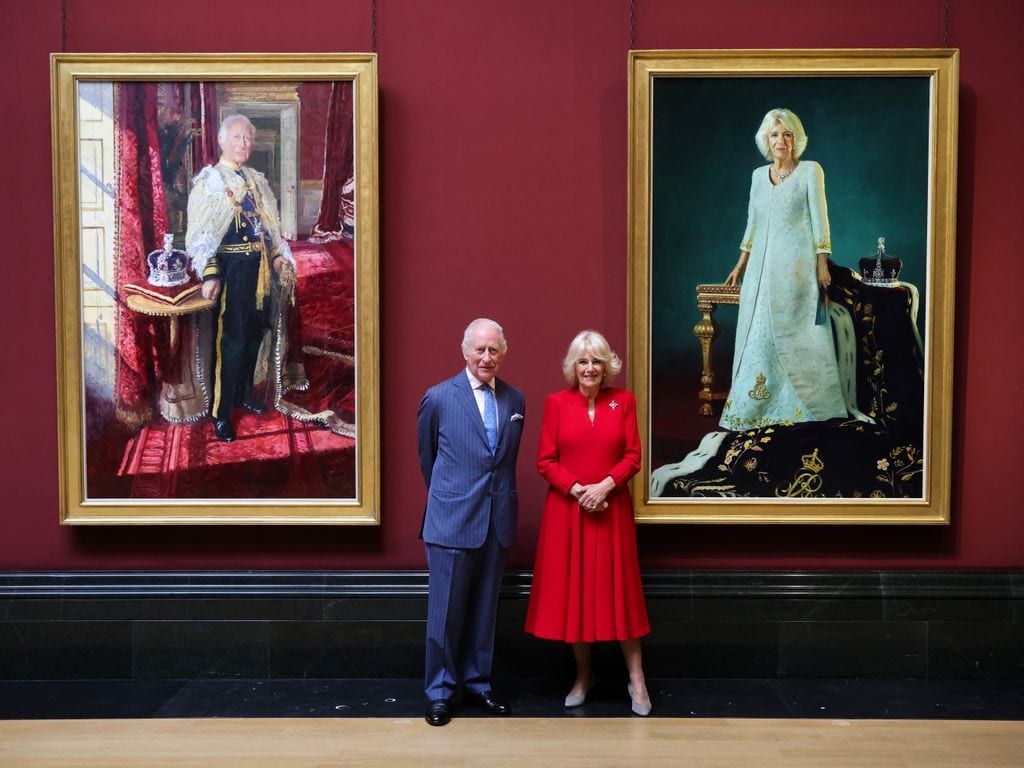 © Getty Images
© Getty Images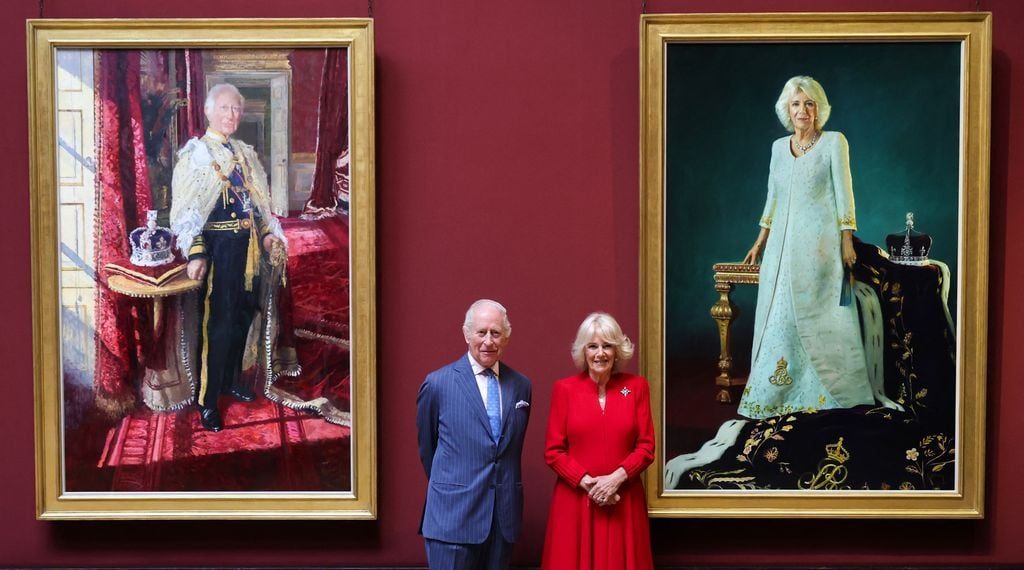 © POOL/AFP via Getty Images
© POOL/AFP via Getty Images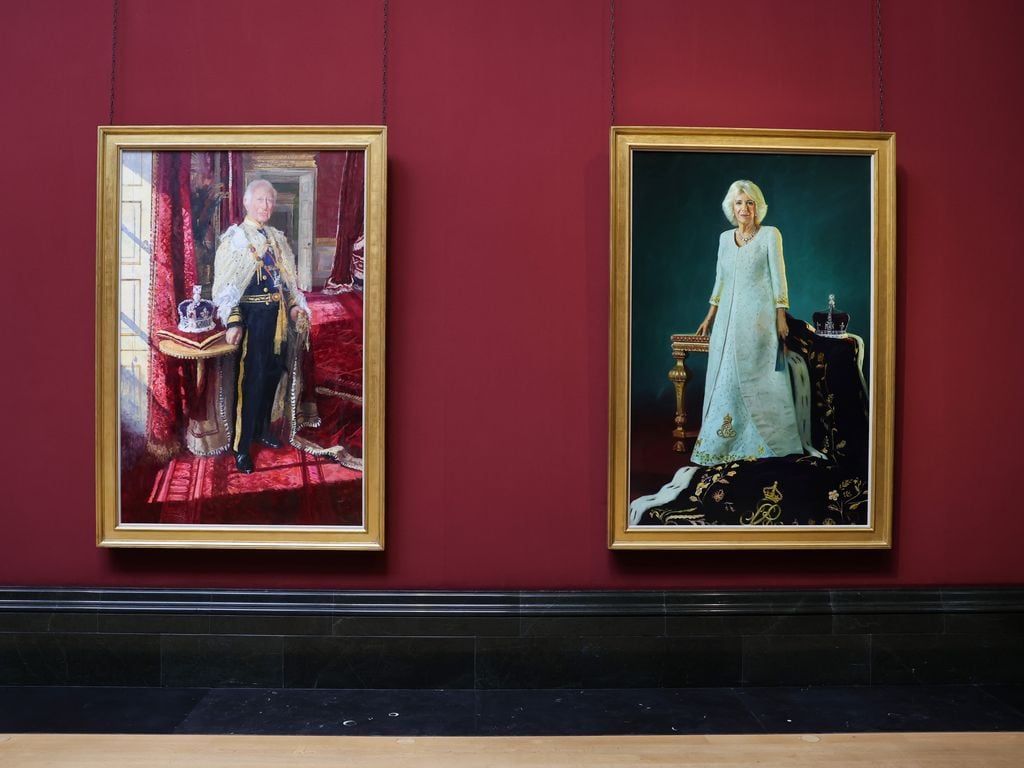 © Getty Images
© Getty ImagesThese portraits have two Spanish winks, on the one hand, the crown rests next to the monarch and not on its head. In Spain, the crown that is used in the proclamations of a monarch, as well as the scepter, belong to the Real collections of national heritage. You have to remember that In our country a monarch is not crowned, but is proclaimed, According to the Constitution. These are two objects that come from the reigns of Carlos II and Carlos III and are guarded in the Royal Palace of Madrid. Since the reign of Isabel II they have been used in the ceremonies of proclamation of kings of Spain and are symbols of the maximum representation of the Spanish monarchy. The crown is a simple ring decorated with chained branches that supports the basket formed by eight mirrors with heraldic emblems crowned by laurel branches. It was made by Fernando Velasco, Platero de Cámara de la Real Casa since 1748. Although it is not taken in the head, It is exhibited in a cushion during real proclamations and funerals.
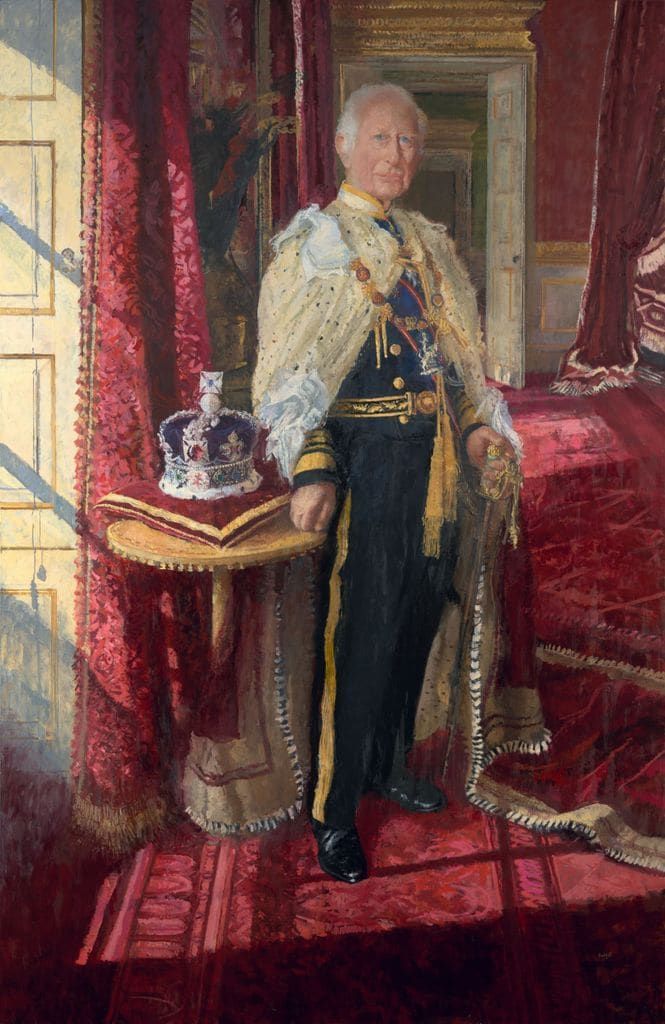
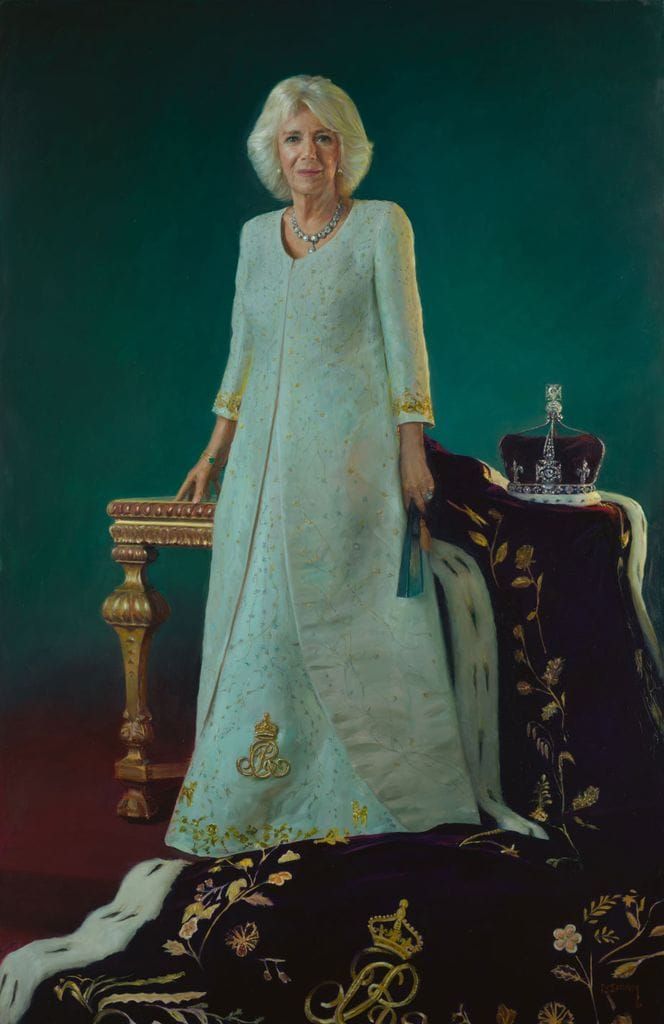
The other Spanish wink
Another Spanish wink of these portraits is that they are a large diptych, which reminds of the photographs that Annie Leibovitz made of Don Felipe and Mrs. Letizia for the collection of the Bank of Spain and that they went around the world. In both cases, two different pieces are, but that one without the other is not conceived.

